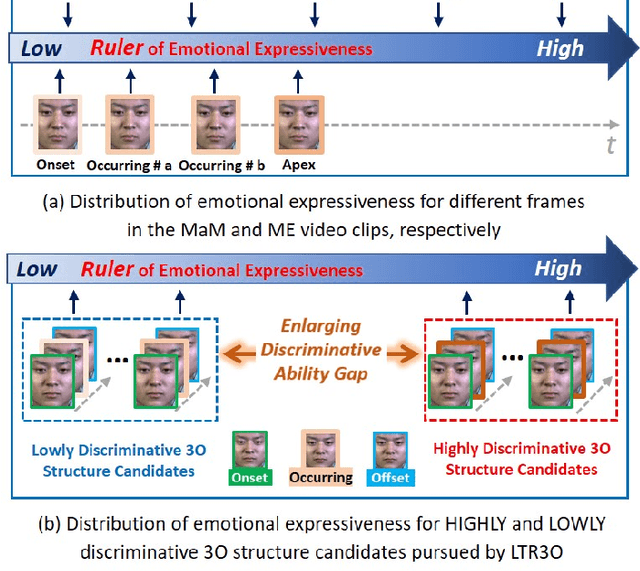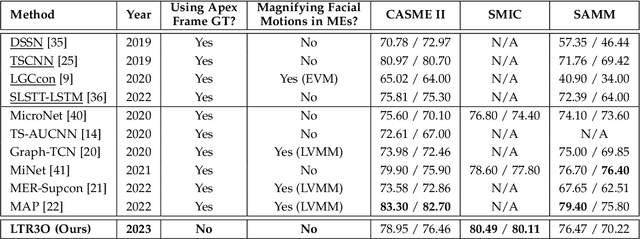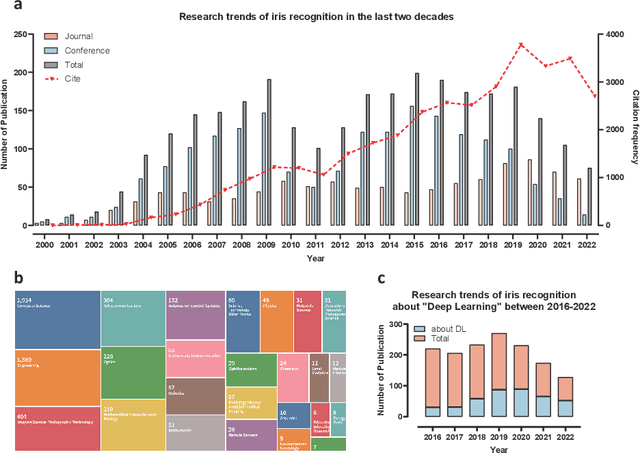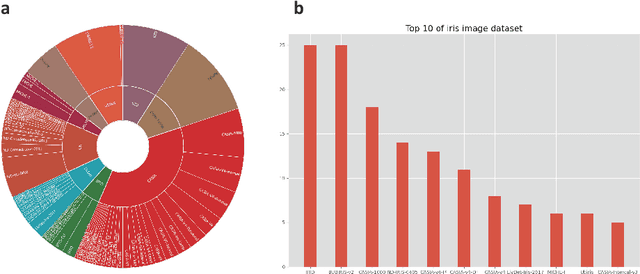Hongli Chang
Learning to Rank Onset-Occurring-Offset Representations for Micro-Expression Recognition
Oct 07, 2023



Abstract:This paper focuses on the research of micro-expression recognition (MER) and proposes a flexible and reliable deep learning method called learning to rank onset-occurring-offset representations (LTR3O). The LTR3O method introduces a dynamic and reduced-size sequence structure known as 3O, which consists of onset, occurring, and offset frames, for representing micro-expressions (MEs). This structure facilitates the subsequent learning of ME-discriminative features. A noteworthy advantage of the 3O structure is its flexibility, as the occurring frame is randomly extracted from the original ME sequence without the need for accurate frame spotting methods. Based on the 3O structures, LTR3O generates multiple 3O representation candidates for each ME sample and incorporates well-designed modules to measure and calibrate their emotional expressiveness. This calibration process ensures that the distribution of these candidates aligns with that of macro-expressions (MaMs) over time. Consequently, the visibility of MEs can be implicitly enhanced, facilitating the reliable learning of more discriminative features for MER. Extensive experiments were conducted to evaluate the performance of LTR3O using three widely-used ME databases: CASME II, SMIC, and SAMM. The experimental results demonstrate the effectiveness and superior performance of LTR3O, particularly in terms of its flexibility and reliability, when compared to recent state-of-the-art MER methods.
Deep Learning for Iris Recognition: A Review
Mar 15, 2023



Abstract:Iris recognition is a secure biometric technology known for its stability and privacy. With no two irises being identical and little change throughout a person's lifetime, iris recognition is considered more reliable and less susceptible to external factors than other biometric recognition methods. Unlike traditional machine learning-based iris recognition methods, deep learning technology does not rely on feature engineering and boasts excellent performance. This paper collects 120 relevant papers to summarize the development of iris recognition based on deep learning. We first introduce the background of iris recognition and the motivation and contribution of this survey. Then, we present the common datasets widely used in iris recognition. After that, we summarize the key tasks involved in the process of iris recognition based on deep learning technology, including identification, segmentation, presentation attack detection, and localization. Finally, we discuss the challenges and potential development of iris recognition. This review provides a comprehensive sight of the research of iris recognition based on deep learning.
PFL-MoE: Personalized Federated Learning Based on Mixture of Experts
Dec 31, 2020



Abstract:Federated learning (FL) is an emerging distributed machine learning paradigm that avoids data sharing among training nodes so as to protect data privacy. Under coordination of the FL server, each client conducts model training using its own computing resource and private data set. The global model can be created by aggregating the training results of clients. To cope with highly non-IID data distributions, personalized federated learning (PFL) has been proposed to improve overall performance by allowing each client to learn a personalized model. However, one major drawback of a personalized model is the loss of generalization. To achieve model personalization while maintaining generalization, in this paper, we propose a new approach, named PFL-MoE, which mixes outputs of the personalized model and global model via the MoE architecture. PFL-MoE is a generic approach and can be instantiated by integrating existing PFL algorithms. Particularly, we propose the PFL-MF algorithm which is an instance of PFL-MoE based on the freeze-base PFL algorithm. We further improve PFL-MF by enhancing the decision-making ability of MoE gating network and propose a variant algorithm PFL-MFE. We demonstrate the effectiveness of PFL-MoE by training the LeNet-5 and VGG-16 models on the Fashion-MNIST and CIFAR-10 datasets with non-IID partitions.
 Add to Chrome
Add to Chrome Add to Firefox
Add to Firefox Add to Edge
Add to Edge